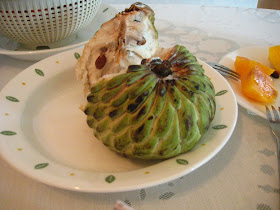
As inescapable as hot, humid weather is in Vietnam, bad beer is just as unavoidable. As I previously mentioned in my dog meat entry, there is still not a universal custom to serve cold beer. So the already bland and tasteless beer is often made worse by serving warmer than room temperature. Just avoid all the Vietnamese beers: 333, Bia Hanoi, Bia Saigon, Halida, they're all fairly terrible. Vietnam is really not a beer country. But they do have a hidden ace up their sleeve, the local fresh beer--Bia Hơi.
More...
So what is this bia hơi? It is a fresh draft beer brewed daily. I'm not a brewmaster, so I don't know what effect this may have on the beer, but the taste is extremely light. You can easily drink this like water. By itself, there would be little appeal, but bia hơi has the power to bring together loud Vietnamese men. Sitting in one of the bia hơi halls with a couple of dishes and some pitchers of beer gives you an unparalleled cultural experience.

Word of warning: bia hơi is not regulated at all. Though you'll be able to find it everywhere in Hanoi, I'd stick to the places that are well-populated to be safe. You never know what kind of antifreeze they pour into the beer.
^



















